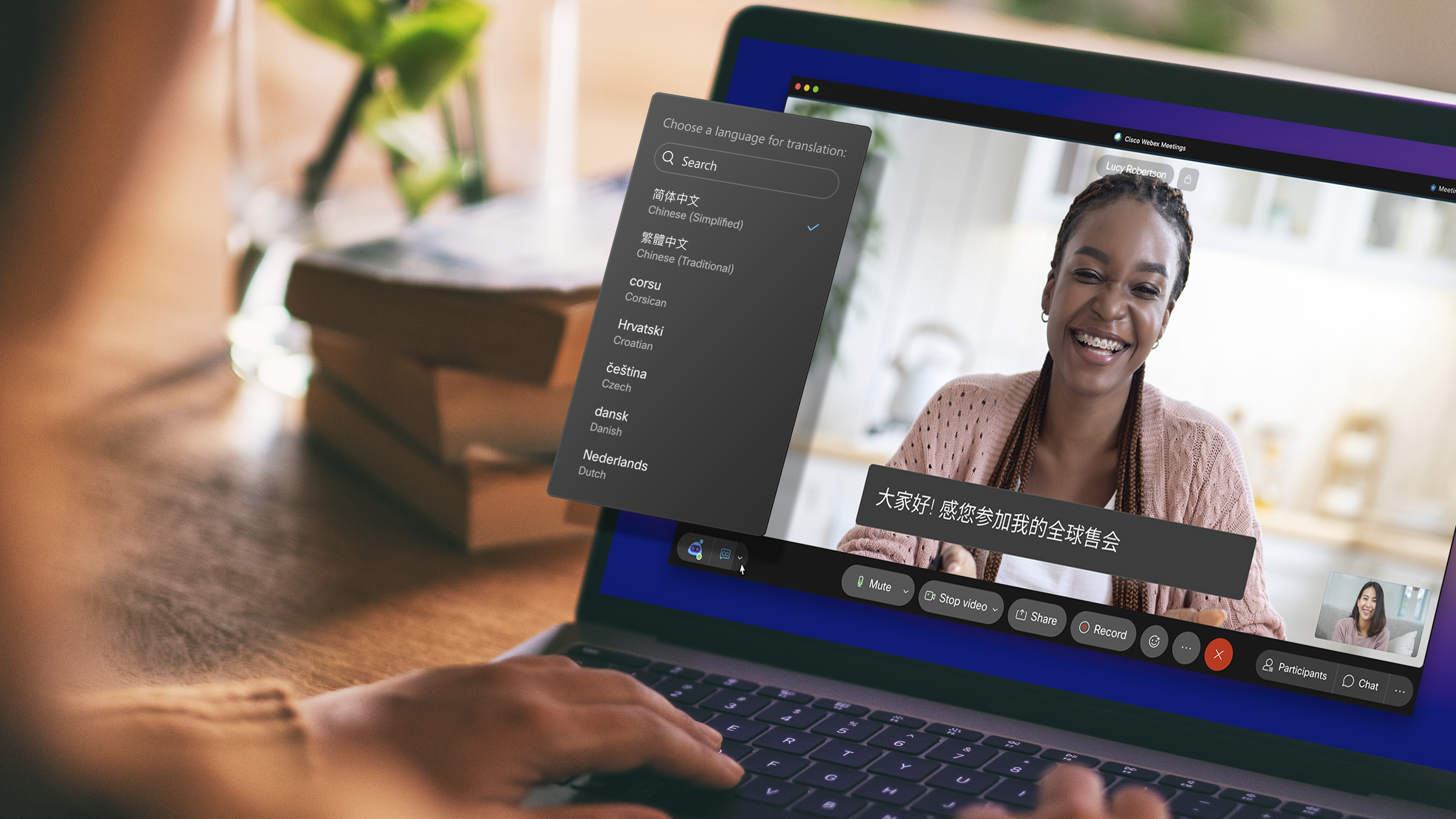What is VoIP QoS and how can it improve your customer experience?
Are you aware what VoIP QoS is and how it can improve your customer communication strategy? Get familiar with the technical aspects of VoIP quality with our helpful breakdown.

The remote working boom of 2020 saw many of us become well acquainted with the best VoIP technology and Voice Over Internet Protocol hardware, such as VoIP phones. But how familiar are you with VoIP Quality of Service—or its shortened form, VoIP QoS—as a tech-savvy working professional?
We're not talking about the occasional screen freeze on Zoom or team glitch on Microsoft Teams, when too many people try to edit the same document. VoIP QoS affects VoIP software quality on a daily basis. In fact it may be a major reason your work laptop's audio quality is inconsistent across meetings.
VoIP QoS matters because it can be the difference between making a good impression on a potential customer or employee candidate. As the saying goes, people understand and buy-in to what they know—and if they can't see your sales pitch or brand partnership presentation, how can they visualise buying from or working with you?
Whether you're remotely-based or in the office, understanding VoIP QoS can help you to improve the overall speed and quality of your digital working experience. Advance your expertise of internet-transmitted voice and video communications as we walk you through the finer technical details of what defines poor or excellent VoIP quality.
What is VoIP QoS and why is it important?
Choosing VoIP software for your company is a no-brainer.
You'll quickly save money compared to the cost of traditional PBX landlines. Not to mention your business also benefits from the many additional advantages that VoIP brings, such as: advanced call routing, on-hold messaging, CRM integration and remote voicemail.
These are all functions that are much more affordable and easier to scale than conventional phone systems. But what about when your VoIP software performs differently to your expectations?
Sign up to the TechRadar Pro newsletter to get all the top news, opinion, features and guidance your business needs to succeed!
Scenario: Imagine momentarily that all your staff start to experience call quality drops during their video meetings. It's certainly not a collective broadband issue if everyone is working from home. The issue has to be with the shared software.
It’s a phenomenon that more and more of us are starting to see happen—largely because our ever-expanding global population use the internet with increasingly varied communication styles.
Luckily for your staff, this issue is easily and quickly fixable if you understand VoIP QoS. Naturally, our hope is that after reading this article you'll be so confident in your VoIP QoS abilities that you'll be able to teach your wisdom to the team!

VoIP Quality of Service definition
VoIP QoS is the process of prioritising network traffic passing through your router, to provide a suitable (or even delightful!) level of service to end users. In a workplace setting, end users are usually your colleagues or employees. Not only does monitoring VoIP QoS lead to more business productivity, it also provides better communication quality with your customers.
What leads to VoIP Quality of Service disruption?
Because VoIP is susceptible to network congestion, it can result in time lags, audio echoes and even dropped calls, regardless of your internet connection speed. We go into more technical detail in our So, how and why do VoIP issues arise anyway? section.
The effects of this in reality can be detrimental to business. Read more on the real life implications of loss of VoIP QoS under How VoIP packet loss can affect call quality.

We've listed the best VoIP services and best VoIP headsets available for businesses to help give you a head start in your search.
Why not also take a look at our popular Nextiva VoIP services review? Or, if you're just starting out with VoIP learn the difference between VoIP and PBX.
In fact, no matter the conversation or meeting, if it’s hard to hear or see what’s being presented, it’s bad for business. We don't mean just sales either. The perception of slow technology may dock points off your company's reputation of professionalism.
Outside of this, there are many other non-VoIP related software and hardware problems that may be affecting your VoIP call quality. These include but are not limited to, bandwidth quality, outdated hardware that no longer has the capacity for modern software capabilities and network configuration challenges.
Everyday benefits of understanding VoIP QoS
Furthermore, with VoIP QoS, your business can:
✔ Offer dedicated bandwidth support to specific customer service teams, users or events.
✔ Streamline traffic priorities across the network. This is extremely useful if you experience peak customer service times during the week.
✔ Ease network congestion and decrease overall data loss, which is an added data security and customer service bonus.
So, how and why do VoIP issues arise anyway?
To understand why your teams may be experiencing call quality issues, it’s important to take a look at how VoIP works. VoIP relies on what are known as ‘data packets’ that arrive at their destination promptly and in the correct order.
By default, your typical router will handle data packets on a ‘FIFO’ (first in, first out) basis. ‘Packet loss’ occurs when one or more packets of data travelling across your network fail to reach their destination. It’s typically caused by errors in data transmission or network congestion.
How VoIP packet loss can affect call quality
Think customers who may not able to hear their customer service advisor for tech support help, teams unable to interact collaboratively in meetings, and potential sales lost because your sales presentations aren’t loading as they should. These are precise examples that directly correspond to VoIP packet loss.
VoIP packet loss is expressed as a percentage and calculated as follows:

Back in 2018, unified communications and collaborations experts Vytopia asserted that "a reasonable amount of packet loss could be 5 to 8%". There's no doubt those figures are smaller now that VoIP technology has advanced. Typically, this is 'acceptable’ with standard communications such as email, where data packets simply retransmit the data if it’s lost or delayed along the way. If a file transfer normally takes 10 seconds, and there’s a 10% loss in data packet transmission, it ends up taking 11 seconds – something that most users won’t even notice.
VoIP can guarantee high-quality voice transmission only if the voice packets, for both the signalling and audio channel, are given priority over other kinds of network traffic.
Cisco
However, with real-time communications such as VoIP voice or video calls, packet loss will have a much more dramatic impact on the end user experience. This same 10% loss creates a much more significant distraction. Those customer service calls you’ve been on where you can only hear 1 out of every 10 words? That’s down to packet loss creating things like drop-outs or clipped words.
And if it gets really bad, one or both sides of the stream can cut out completely, causing the entire call to drop. So, when it comes to voice and video calls, even a 0.5% loss is noticeable to users and anything greater than 2% is annoying and potentially damaging to the conversation.
Voice traffic VoIP QoS standards from Cisco

In their QoS for VoIP Overview guide, technology conglomerate Cisco explain that the following standards must be met for intelligible VoIP transmissions:
1. The default G.729 codec requires packet loss far below 1% to bypass audio faults. In an ideal scenario, there should be zero packet loss for VoIP.
2. The ITU G.114 specification advises less than 150 milliseconds one-way end-to-end delay for high-quality real-time traffic such as video or voice (except international calls, where one-way delay up to 300 milliseconds is acceptable, particularly for satellite transmission. This one-way delay takes into consideration the time required for the signal to travel the distance).
3. This is perhaps the most obvious VoIP QoS standard: the process of VoIP packet loss, also known colloquially as jitter/jitter buffer must be minimized.
During jitter buffering, VoIP data packets are sometimes sent in the wrong order or missed completely to compensate for slow packet speed, which can lead to scrambled sentence structures during conversations. This all adds to the end-to-end delay, so really jitter buffering is usually only effective on delay variations which are less than 100 milliseconds.
What steps should I take to get my business VoIP QoS ready?
It’s important to ready your business for VoIP QoS so that the right measures are taken in setting it up and all users are educated as to the impact it may have.
Firstly, a dedicated team or person should be appointed to lead the project. Assuming this is your IT department or manager, then they should initially look to run packet capture tests using software applications such as Wireshark.
Employees—especially those in customer service or customer experience departments—should also be asked to monitor audible call quality over a set period of time, noting down which user or side heard the problem and where any drop-outs are occurring. You can even get customers involved, add include any questions about the quality of the call as part of a follow-up customer service survey.
As your business determines the QoS needed, ensure you document all current network settings before any changes are made. It’s then best practice to conduct a full service VoIP provider review in order to establish which solution is best for your business and user requirements.
VoIP testing and VoIP QoS best practises
According to VoIP giants Nextiva, VoIP Quality of Service best practices that both IT departments and general users can follow are:
- Using a wired Ethernet connection instead of Wi-Fi to avoid data transmission interference.
- Testing WAN and LAN connections as often as possible and checking for overall connection stability.
- Regular call quality monitoring and reports so that patterns can be detected across times of the day or week, or even certain teams and events.
Who is responsible for VoIP QoS?

You don’t have to be an expert to set up and configure VoIP QoS, but it does help to know the wider context of your business IT infrastructure. It’s also advisable that one person or department is responsible for VoIP QoS so that the right governance protocols can be put in place and monitored, and so that users have a single point of contact for any problems that may arise.
A VoIP QoS best practice is to have your IT department be responsible for the set-up and ongoing management of the service.
In the first instance, your IT department or IT manager will want to liaise closely with any department heads responsible for customer service or customer experience, in order to carry out the following tasks:
1. Prioritising network traffic by type, not device.
2. Assigning call data packets a higher priority over other network traffic, if voice/video calls are your must used method of colleague and customer communication.
3. Setting up Trust Mode and Strict Priority.
4. Ensuring phone settings for QoS, Jitter Buffer and Echo Cancellation are all enabled and optimised.
Ready to start regulating your VoIP QoS?
The use of audio and video conferencing is most definitely here to stay and will potentially increase further in the coming years. With the benefits that VoIP brings to all sizes of business, it’s important that measures are taken to ensure it continues to work efficiently and effectively for users and customers alike.
Maintaining VoIP QoS is an easy, quick way to improve call quality and guarantee a more reliable VoIP service, so that your business can operate without interruption and you can continue to provide an excellent customer experience.
Emma is an experienced technology writer covering everything from Point of Sale (POS) systems to Voice over Internet Protocol (VoIP) business phone systems. As well as Techradar, she has written for IT Builder, Soldo, and CArd Payment Guru.